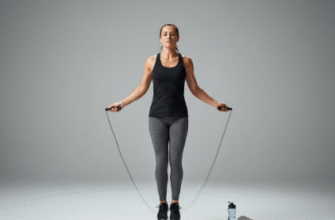Scrolling through perfectly curated feeds, you might get the impression that body acceptance is the latest must-have accessory. One day it’s skinny jeans, the next it’s embracing your curves, presented almost like a switch you can flip. Hashtags trend, influencers share smiling photos, and brands jump aboard, selling self-love alongside their products. But let’s be honest: for most of us, accepting the bodies we live in isn’t a quick makeover or a bandwagon to jump on. It’s a journey, often a long and winding one, filled with potholes, detours, and moments where you feel completely lost.
It’s far less glamorous than the internet makes it seem. It’s not about suddenly waking up one morning and adoring every perceived flaw. It’s not about forcing yourself to love stretch marks or cellulite if you’re not there yet. Reducing body acceptance to a trend trivializes the deep-seated societal pressures and personal histories that shape how we view ourselves. Decades of media messages, casual comments from family or friends, and the relentless comparison culture fostered online leave their mark. Unpacking all of that isn’t a weekend project; it’s ongoing work.
Beyond the Hashtag: Unpacking Real Acceptance
So, what does this journey actually look like? It’s messy. It involves confronting uncomfortable feelings and challenging beliefs you might not have even realized you held. It’s about shifting the focus, slowly, painstakingly, from what your body looks like to what it does for you. It’s about gratitude for the simple, often overlooked, functions: breathing, walking, feeling the sun on your skin, hugging someone you love. These things are profound, yet we’re often taught to value aesthetics above all else.
True body acceptance often starts with neutrality. It’s the middle ground between self-loathing and ecstatic self-love. It’s saying, “This is my body. It exists. It carries me through life. It doesn’t need to be perfect or meet some external standard to be worthy of respect.” This neutrality can be a revolutionary act in a world constantly telling us we need fixing.
Think about it: we don’t usually demand our vital organs be aesthetically pleasing. We appreciate our lungs for breathing, our hearts for beating. Body acceptance encourages extending that same baseline respect to the vessel that houses them. It’s about recognizing your body as your home, perhaps a home under renovation, perhaps a home with quirks, but fundamentally yours and deserving of care, not constant critique.
The Non-Linear Path
One of the biggest misconceptions fueled by the “trend” narrative is that progress is linear. You don’t simply “achieve” body acceptance and stay there forever. There will be good body image days and bad body image days. There will be days when you feel relatively at peace, and days when old insecurities flare up unexpectedly, triggered by an unflattering photo, a comment, or even just a change in the weather.
This is normal. It doesn’t mean you’ve failed or that the journey isn’t working. It just means you’re human. The goal isn’t to eliminate bad body image days entirely – that might be unrealistic for many. Instead, the journey teaches us to navigate those days with more compassion and less self-attack. It’s about developing tools to recognize the negative self-talk spiral and gently redirecting it, reminding yourself that a fleeting feeling doesn’t negate your worth or erase the progress you’ve made.
Consider these points about the journey:
- It requires active unlearning of societal beauty standards.
- It involves setting boundaries, both online and offline.
- It means celebrating non-scale victories: feeling more energetic, trying a new activity, wearing something you previously avoided.
- It often involves grief – grieving the “ideal” body you thought you should have.
- It demands patience, lots and lots of patience.
Cultivating Acceptance: Small Steps on a Long Road
If it’s not a trend to follow, how do you navigate this journey? There’s no single map, as everyone’s starting point and path are unique. However, certain practices can act as helpful companions along the way. These aren’t rules, but rather tools you can experiment with.
Curate Your Environment
What you consume visually and mentally matters enormously. Take a critical look at your social media feeds. Who are you following? Do their posts make you feel inspired or inadequate? Unfollow accounts that consistently trigger negative comparisons or promote unrealistic ideals. Seek out creators who showcase diverse body types, ages, and abilities, and whose focus is broader than just appearance. Similarly, be mindful of the magazines, TV shows, and movies you consume. Diversifying your intake can subtly shift your perception of what’s “normal” and “acceptable.”
Shift Focus to Functionality
Make a conscious effort to appreciate what your body allows you to do. Instead of fixating on the appearance of your legs, focus on their strength carrying you up stairs or enabling you to dance. Instead of criticising your arms, appreciate their ability to lift groceries, create art, or embrace loved ones. Keeping a gratitude journal specifically for bodily functions, big or small, can be a powerful practice. This shifts the narrative from ornamentation to capability.
Dress for Your Current Body
Holding onto clothes that no longer fit comfortably “just in case” often serves as a constant, uncomfortable reminder of perceived bodily failings. It reinforces the idea that your current body isn’t good enough. Dressing in clothes that fit well and feel comfortable right now sends a message of acceptance. It allows you to move through the world with more ease and less physical restriction, freeing up mental energy previously spent on feeling constricted or self-conscious.
Remember this isn’t a race. Body acceptance is a deeply personal process, not a competition or a destination with a finish line. Be patient and extend yourself the same kindness you would offer a friend navigating a difficult path. Setbacks are part of the process, not signs of failure.
Practice Mindful Embodiment
Instead of constantly judging your body from an external perspective, try tuning into its internal sensations. Practices like gentle stretching, yoga, or simply paying attention to your breath can help you reconnect with your physical self in a non-judgmental way. How does your body feel? Where do you hold tension? What sensations are pleasant? This internal focus fosters a relationship with your body based on experience rather than appearance.
Acceptance vs. Positivity
It’s also worth noting the distinction often made between body acceptance and body positivity. While related, they aren’t identical. Body positivity often emphasizes loving your body, celebrating all its aspects enthusiastically. For someone deeply entrenched in negative self-image, this can feel like too big a leap, potentially leading to feelings of failure if they can’t instantly conjure up that love.
Body acceptance can serve as a more accessible starting point or a sustainable long-term goal. It doesn’t demand adoration, just respect and peace. It’s the acknowledgement that your body is okay as it is, regardless of whether you actively “love” every part of it every single day. It’s about ending the war, even if you don’t immediately throw a victory parade.
Ultimately, body acceptance is an ongoing practice of returning to yourself with kindness. It’s about gently challenging the external and internal voices that insist your worth is tied to your appearance. It’s about recognizing that your body is the vehicle for your life’s experiences, deserving of care and respect, not constant criticism. It’s not a trend that will fade; it’s a fundamental shift towards a more peaceful and embodied existence. It’s your journey, unfolding one day, one breath, one compassionate thought at a time.








